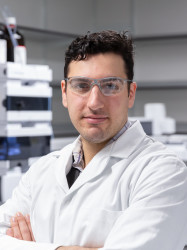BibTex format
@article{Pinto:2022:10.1021/acs.jpcc.1c08403,
author = {Pinto, F and Wilson, A and Moss, B and Kafizas, A},
doi = {10.1021/acs.jpcc.1c08403},
journal = {The Journal of Physical Chemistry C: Energy Conversion and Storage, Optical and Electronic Devices, Interfaces, Nanomaterials, and Hard Matter},
pages = {871--884},
title = {Systematic exploration of WO3/TiO2 heterojunction phase space for applications in photoelectrochemical water splitting},
url = {http://dx.doi.org/10.1021/acs.jpcc.1c08403},
volume = {126},
year = {2022}
}

